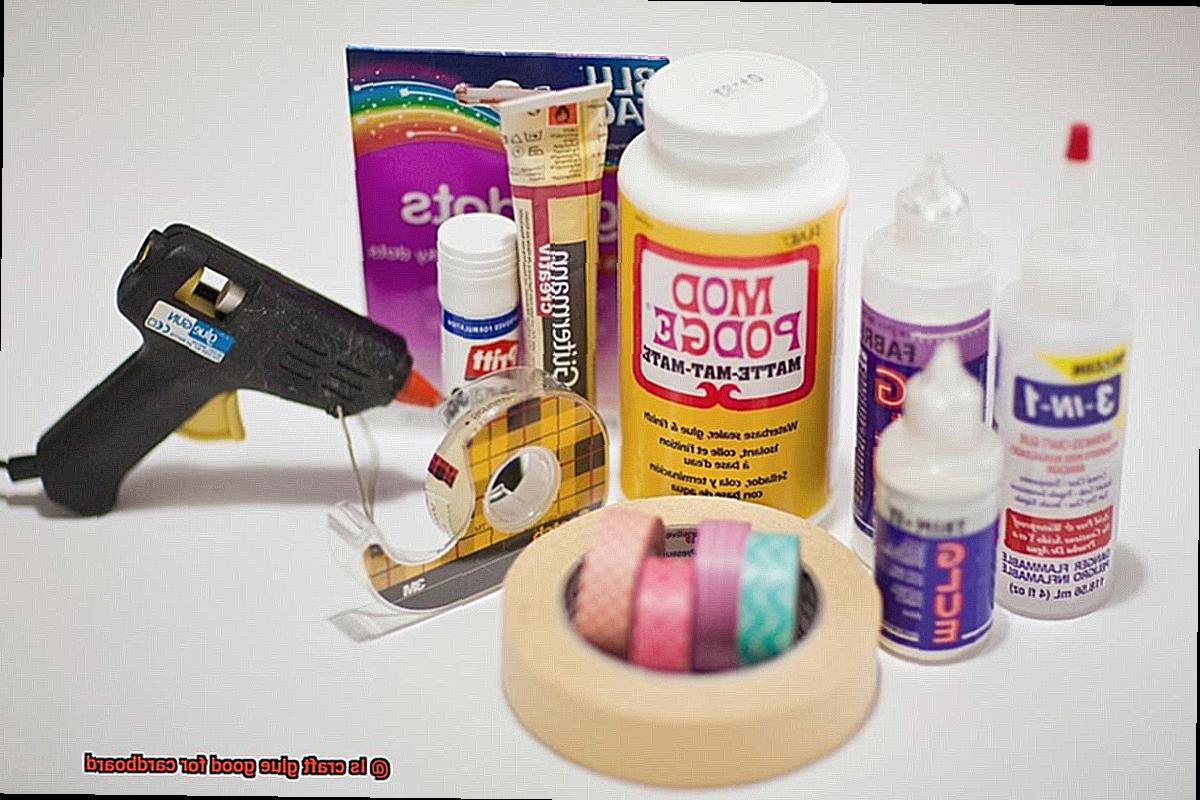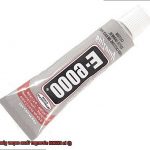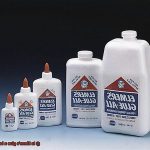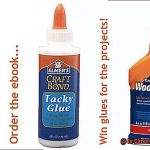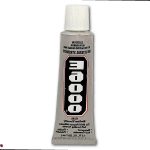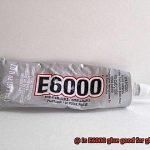Today, we’re going to tackle a burning question that’s been on everyone’s mind: Is craft glue the perfect match for cardboard? If you’ve ever dabbled in the art of cardboard creations, you know that finding the right adhesive can make or break your project.
But fear not, my friends, because I’m about to spill all the secrets on why craft glue is an absolute game changer when it comes to bonding with cardboard. Whether you’re crafting delicate paper masterpieces or constructing sturdy boxes, using craft glue will take your creativity to new heights.
Let’s get started.
What is Craft Glue?
Contents
Craft glue is a versatile adhesive specifically designed for use in crafts and DIY projects. It is a popular choice for bonding various materials, including cardboard, due to its strong adhesive properties and flexibility. Craft glue comes in different forms, such as liquid glue, glue sticks, and glue dots, providing options for different project needs.
Liquid craft glue is commonly used when the glue may be visible, as it dries clear and offers a strong bond. Glue sticks are solid sticks of adhesive that can be applied directly to the surface of the cardboard, while glue dots are small dots of adhesive that can be easily applied to specific areas. These different forms of craft glue provide flexibility in application methods.
Craft glue bonds quickly and securely, ensuring that glued items stay in place. It allows cardboard to bend or fold without the glued parts coming apart, making it suitable for projects that require flexibility. Additionally, craft glue is usually water-resistant or waterproof once dry, protecting cardboard from moisture damage. This feature is particularly beneficial for outdoor or humid environment projects.
When using craft glue on cardboard, it is important to apply it evenly and in thin layers to prevent excessive soaking or pooling on the surface. This helps prevent warping or distortion of the material. It is also recommended to let the glue dry completely before handling or applying pressure to ensure a strong and durable bond.
For projects that require precise positioning of pieces, using a temporary adhesive like removable tape before applying craft glue can be helpful. This allows for adjustments before the glue sets.
What is Cardboard?
Cardboard, a versatile material, is commonly used for packaging, shipping, and various craft projects. It is created by pressing layers of paper pulp together, resulting in a sturdy yet lightweight material. The main component of cardboard is cellulose fibers, which are derived from wood or recycled paper.
Cardboard comes in different thicknesses, ranging from thin sheets to heavy-duty boards. The thickness determines its strength and durability, with thicker cardboard being suitable for heavy-duty applications and thinner cardboard commonly used for lightweight projects.
One of the standout features of cardboard is its malleability. It can be easily cut, folded, and shaped, making it a favorite among DIY enthusiasts and crafters who love crafting three-dimensional objects. Cardboard can be manipulated into various forms such as boxes, models, sculptures, and even furniture.
Absorbency is another crucial characteristic of cardboard. It readily absorbs moisture, which can impact its structural integrity. To maintain its shape and strength, it’s vital to protect cardboard from getting wet or damp for prolonged periods.
When it comes to bonding cardboard together, several adhesive options are available. Craft glue is the go-to choice for sticking pieces of cardboard together. Usually water-based and drying clear, craft glue is suitable for most cardboard projects. However, not all craft glues are equal in strength. Some offer stronger bonds and may be better suited for specific types of projects. It is advisable to choose a craft glue explicitly labeled as suitable for cardboard to ensure effectiveness.
In addition to craft glue, other adhesive options can be used with cardboard. These include hot glue guns, double-sided tape, adhesive sprays, and even traditional white glue. The choice of adhesive ultimately depends on the project at hand and personal preference.
Is Craft Glue Suitable for Bonding Cardboard?
Craft glue can be a suitable option for bonding cardboard in crafting and DIY projects. However, its effectiveness may depend on several factors that need to be considered.
Firstly, the type of craft glue used is important. Craft glues that are specifically formulated for bonding porous materials like cardboard tend to have stronger bonding capabilities. These glues are designed to provide a secure hold on porous surfaces, making them suitable for bonding cardboard.

Surface preparation is another crucial factor to ensure effective bonding. Cardboard surfaces can vary in texture and composition, so it is essential to clean them thoroughly before applying the glue. Wiping the surfaces with a damp cloth or using a mild detergent can remove any debris or grease that may hinder the adhesive’s effectiveness.
When applying craft glue to bond cardboard, it is recommended to use a thin, even layer on both surfaces. Pressing the surfaces firmly together immediately after applying the glue helps create a strong bond. Additional reinforcement methods, such as clamps or heavy objects, can be used to hold the cardboard pieces together while the glue dries.
However, it is important to note that craft glue may not provide the strongest or most durable bond for cardboard. Cardboard is a porous material, and depending on the weight or stress placed on the bonded pieces, craft glue alone may not be sufficient. For projects that require a stronger and more durable bond, it is advisable to consider using adhesives specifically designed for bonding cardboard, such as hot glue guns or epoxy adhesives.
Advantages of Using Craft Glue on Cardboard
Craft glue is a versatile and effective adhesive for bonding cardboard in various crafting projects. Whether you are working on school projects, creating intricate cardboard art, or constructing sturdy structures, craft glue offers several advantages that make it a preferred choice for many crafters.
One of the main advantages of using craft glue on cardboard is its ability to create a strong bond. Craft glue is specifically designed to create durable bonds on various surfaces, including cardboard. When applied correctly, craft glue forms a strong and long-lasting bond that can withstand the rigors of handling and transportation. This is particularly advantageous when working on projects that require stability, such as constructing cardboard structures or creating intricate cardboard art pieces.
Craft glue also offers versatility in terms of compatibility with different materials. It can be used to adhere paper, fabric, embellishments, and other materials to cardboard surfaces seamlessly. This versatility allows for creativity and experimentation in crafting projects, as craft glue is reliable for bonding different types of materials to cardboard.
Another advantage of using craft glue on cardboard is its easy application. Craft glue typically comes in user-friendly packaging, such as squeeze bottles or applicator tips, which makes it easy to apply onto cardboard surfaces. The precise control offered by these applicators ensures that the glue is applied exactly where it is needed without making a mess. This ease of application is particularly beneficial when working on intricate designs or delicate pieces where precision matters.
Furthermore, craft glue has a quick drying time, which is advantageous when working on time-sensitive projects or when you need to move on to the next step of your craft without waiting for extended periods. This feature allows for efficient use of time and ensures that your cardboard project can progress smoothly without unnecessary delays.
Many craft glues available in the market are also non-toxic and safe for use. This is especially important when working with children or in environments where safety is a concern. Non-toxic craft glues provide peace of mind and allow for worry-free crafting experiences without compromising on effectiveness or bond strength.
Craft glue is widely available in craft stores, online marketplaces, and even in general retail stores. This accessibility makes it convenient for crafters to obtain the adhesive they need without much hassle. Additionally, the affordability of craft glue makes it a cost-effective option for bonding cardboard, especially when compared to other specialized adhesives.
Considerations When Using Craft Glue on Cardboard
Craft glue is a popular adhesive choice for various crafting projects, including working with cardboard. However, there are several important considerations to keep in mind when using craft glue on cardboard.
First and foremost, it is crucial to select the right type of craft glue for the job. Different types of craft glues, such as white glue, clear glue, and hot glue, have different properties and are suited for different materials. When working with cardboard, it is best to choose a craft glue that is specifically formulated for use on paper and cardboard.
The adhesive strength of the craft glue is another important consideration. Cardboard is a porous material that requires a strong adhesive to create a secure bond. Some craft glues may not offer sufficient strength for bonding cardboard, leading to projects falling apart over time. It is advisable to opt for a craft glue that provides a strong bond specifically designed for use with cardboard.
Drying time is also a crucial factor to consider. Cardboard projects often require precision and accuracy during assembly, and a long drying time can be inconvenient. Look for craft glues that dry quickly, allowing for faster project completion. However, ensure that the glue still allows enough open time for adjustments before fully drying.
Flexibility is another consideration when working with cardboard. Cardboard can bend and flex in projects like boxes or structures. Using a flexible craft glue ensures that the bond remains intact even when the cardboard is subjected to movement or stress.
Proper application of craft glue is essential for successful bonding on cardboard. Applying too much glue may cause warping or sogginess in the cardboard, while too little may result in a weak bond. Follow the manufacturer’s instructions on how to apply the craft glue properly to achieve optimal results.
Safety should never be overlooked when using craft glue on cardboard. Some craft glues may contain harmful chemicals or emit strong fumes, which can be hazardous if not used in a well-ventilated area. Always read the product labels and follow any safety precautions recommended by the manufacturer.
Lastly, keep in mind that the longevity of the bond between the craft glue and cardboard may vary depending on factors like humidity, temperature, and handling. Consider these factors and choose a craft glue that is suitable for the specific project and environment in which it will be used.
Alternatives to Craft Glue for Bonding Cardboard
Craft glue is a popular choice for bonding cardboard due to its ease of use and availability. However, there are several alternatives to craft glue that can provide strong and durable bonds between cardboard pieces. Here are some advantages and limitations of using these alternatives:
Hot glue:
- Provides a strong bond between cardboard pieces.
- Dries quickly, allowing for instant bonding.
- Can be used on a variety of surfaces.
- Offers flexibility in application.
- However, it can be messy and requires quick and precise application before it cools and hardens. It is not suitable for high-temperature environments as it can melt. Additionally, it may not be ideal for projects where the bond needs to be removable or adjustable.
Double-sided tape:
- Easy to use and provides a clean and neat bond between cardboard pieces.
- Requires no drying time.
- Can be easily removed or adjusted if needed.
- Available in various widths and lengths.
- However, it may not provide as strong of a bond compared to glue. It may not be suitable for heavy-duty applications, and the adhesive strength may weaken over time.
Epoxy adhesive:
- Creates a strong and durable bond that can withstand significant weight or stress.
- Suitable for heavy-duty applications.
- Provides a permanent bond.
- However, it requires careful mixing of two components before application. It has a longer curing time compared to other adhesives and can be messy, requiring additional tools for application.
Staples or brads:
- Provides a secure and reliable bond between cardboard pieces.
- Suitable for projects where a strong mechanical bond is required.
- Can be applied quickly using a staple gun or hammer.
- However, it leaves visible holes in the cardboard, which may not be suitable for projects where a clean appearance is desired. Additional tools are required for application.
Specialty adhesives:
- Specifically designed for bonding cardboard.
- May have properties such as flexibility or moisture resistance.
- Can provide a strong and durable bond.
- However, they may be more expensive compared to other adhesive options. Availability may also be limited depending on the location, and specific application techniques may be required.
Drying Time of Craft Glue
Craft glue is a versatile adhesive commonly used for various crafting projects, including working with cardboard. When using craft glue on cardboard, one important factor to consider is the drying time. The drying time of craft glue can vary depending on several factors, such as the type of glue used and the thickness of the glue application. By understanding these factors and following proper application techniques, you can achieve efficient results when working with craft glue on cardboard.
One factor that affects the drying time of craft glue on cardboard is the type of glue used. Different types of craft glues have varying drying times. For example, white school glue, also known as PVA glue, and clear-drying craft glue are commonly used for cardboard projects and generally have relatively quick drying times.
In addition to the type of glue, the thickness of the glue application can also affect drying time. Thicker layers of glue will take longer to dry compared to thin, even layers. It is advisable to apply a thin and even layer for quicker drying.
Environmental conditions can also influence the drying time of craft glue. Higher temperatures and lower humidity levels generally promote faster drying, while colder temperatures and higher humidity can prolong drying time. Therefore, it is ideal to work in a warm and dry environment for faster drying.
If you are working on a time-sensitive project or need a faster drying time, there are craft glues available with accelerators or quick-drying formulas. These glues are specifically designed to speed up the drying process, allowing you to complete your projects more efficiently.
To speed up the drying process, you can also use a few techniques. Placing a fan or directing airflow towards the glued cardboard can help evaporate moisture and accelerate drying. Additionally, placing the glued cardboard in a warm and dry environment, such as near a heater or in a well-ventilated area, can facilitate faster drying.
It is important to note that even if the surface appears dry, it is crucial to allow sufficient drying time before handling or manipulating glued cardboard pieces. Rushing the process could result in the glue not adhering properly, compromising the strength and durability of the bond.
P–8TLM_SxE” >
Conclusion
Craft glue is, without a doubt, an exceptional adhesive for joining pieces of cardboard in a wide range of crafting and do-it-yourself endeavors. Its remarkable adhesive properties, along with its flexibility and versatility, make it the perfect choice for working with this incredibly adaptable material.
Craft glue comes in various forms, including liquid glue, glue sticks, and glue dots, providing you with an array of options to suit your specific project needs. It bonds swiftly and securely, allowing cardboard to be bent or folded without the glued sections coming apart. Moreover, craft glue typically becomes water-resistant or even waterproof once dry, effectively safeguarding cardboard against potential moisture damage.
When employing craft glue on cardboard, it is crucial to apply it evenly and in thin layers to prevent any warping or distortion of the material. Additionally, it is highly recommended that you allow the glue to dry completely before handling or applying pressure to ensure a robust and enduring bond.
While craft glue is suitable for most cardboard projects, there may be instances where a stronger and more durable bond is required. For projects that necessitate withstanding heavier weight or stress, alternative adhesives such as hot glue guns or epoxy adhesives might prove more appropriate.
All things considered, craft glue offers numerous advantages: ease of application, rapid drying time, compatibility with various materials, affordability, and accessibility. By using craft glue in your creations, you can unleash your creative prowess while guaranteeing a dependable bond between different pieces of cardboard.

